#Crustose lichen
Text





Verrucaria margacea
images: source | source
#lichen#lichens#lichenology#lichenologist#mycology#ecology#biology#fungi#fungus#nature#symbiosis#symbiotic organisms#algae#Verrucaria margacea#Verrucaria#I'm lichen it#lichen a day#daily lichen post#crustose lichen#lichen subscribe#trypo#tw: trypophobia
360 notes
·
View notes
Text







Frosty saucer 》 Ochrolechia africana
One of the most beautiful lichens I've found recently. I love the texture the apothecia create when they cluster together like this. What I wouldn't give to be small enough to wander this structure like a field.
The one in the fourth image is possibly a different species.
Southeast Texas, 7 July 2024
#amatuer mycology#mushrooms#mycology#fungi#mushroom hunting#mushrooms of texas#texas mushrooms#wild fungi#fungi of texas#fungarium#lichen#lichenology#lichen species#lichen identification#crustose lichen#species identification#frosty saucer#apothecia#texture#special interest#goblincore#crowcore#trypophobia#tw trypophobia
136 notes
·
View notes
Text

Crustose lichen - Líquene crustáceo
Freixo de Espada à Cinta/Portugal (1/02/2023)
[Nikon D500; AF-S Nikkor 500mm F5,6E PF ED VR; 1/1600s; F10; 400 ISO]
51 notes
·
View notes
Text
Thought people might want to see these specimens growing on my fence:
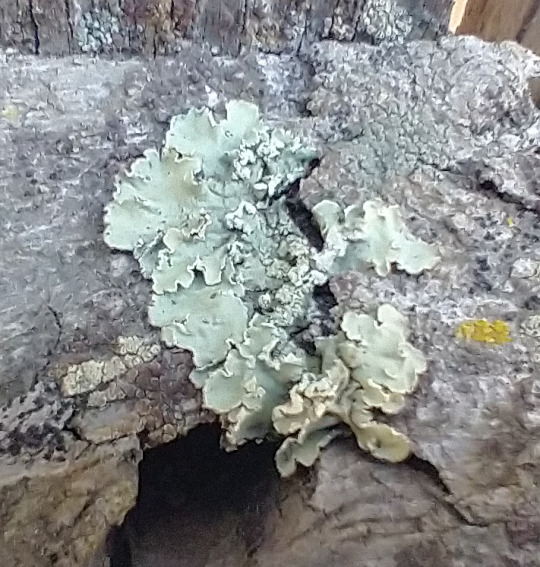
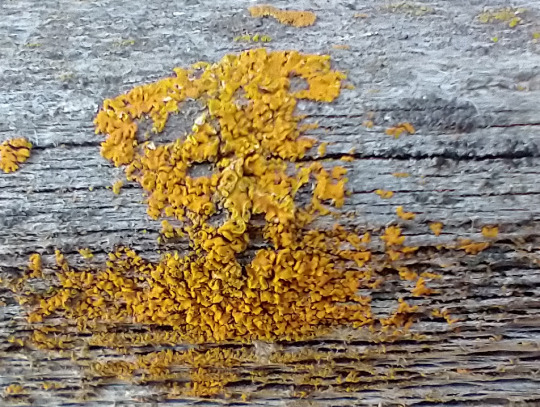
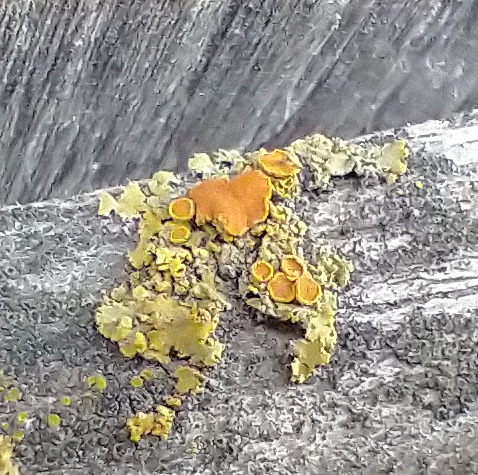

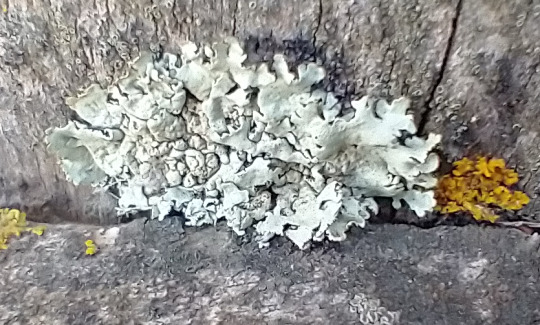
#mycology#lichen#wild fungi#foliose lichen#Visible podatia? I think?#Crustose lichen#If anybody would be interested in trying to identify these be my guest
0 notes
Text
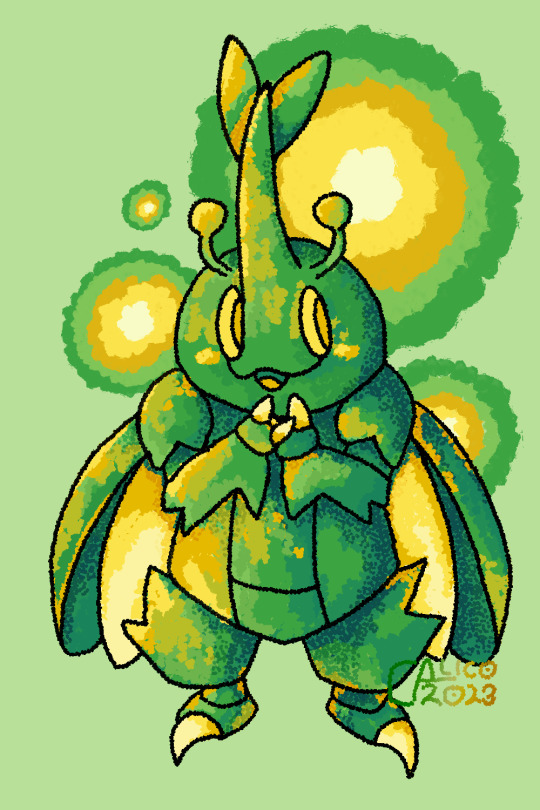

My aroallo heracross icon for " Pride Month" this Year #Lfg
#my art#pokemon#heracross#aromantic#aroallo#“Hes mischievous” - my dad#These brushes made me realize that I can draw a crustose lichen when ever i want.
183 notes
·
View notes
Text
Compost-preacher -> crustose btw
#:)#this was v on a whim but yknow#crustose is tha lichen form thats flush with its substrate#bye bye sufjan url you were loved
1 note
·
View note
Text
tempted to make a lichen growth form tier list but in truth i appreciate all of them in their own ways.... fruiticose is lavish and interesting and genuinely kinda insane to me but only because i come from a place where all the lichens are crustose.... foliose lichens are also kinda wild and in my experience are laden with soridia on the edges and also sometimes can come out branched or tube-shaped or hairy on the edges which is wild, also i think its funny that they end up growing on top of each other on dense logs and stuff....crustose lichens have a special place in my heart because i grew up with them and i love how they cover the bark of trees and some of them are so flat you can barely tell its a lichen (Graphis scripta certified classic lichen moment)...... squamulose is a bit of a deep cut lichen moment but one of my favorite lichen species is squamulose (Psora decipiens ❤️💞🫶 spoiler alert: small and pink no less)......etc. just thinking about them today tbh
369 notes
·
View notes
Text
Do the goths know about the grotesque imagery of the bog??? Do they know about sphagnum moss and the non-crustose lichens? the moss, blood red, evoking flesh, evoking the soft yeldingness of the inside of your cheek... the lichen, brittle, evoking bones, evoking the delicate vessels of the lungs? Do the goths know that these things grow together? Do they know that sometimes the lichen grows on the red moss, like a crown of bone on a pillow of blood? In a land where little lives and nothing rots? Do the goths know about the bog????
#i know tumblr girlies love a bog body#but there are many other rich veins of imagery in your local peatland!#many untapped!#me fein
546 notes
·
View notes
Text
The Special Words for the Growth Forms of Lichen
The special words for forms of lichen are almost as good as the special words for the textures of ants. The Foliose, The Crustose and The fruticose. Areolate, Filamentous, Placodioid, Byssoid and Calicioid Who can forget Cladoniform and the Squamulose!
And must we mention the Gelatinous and Leprose?
150 notes
·
View notes
Text
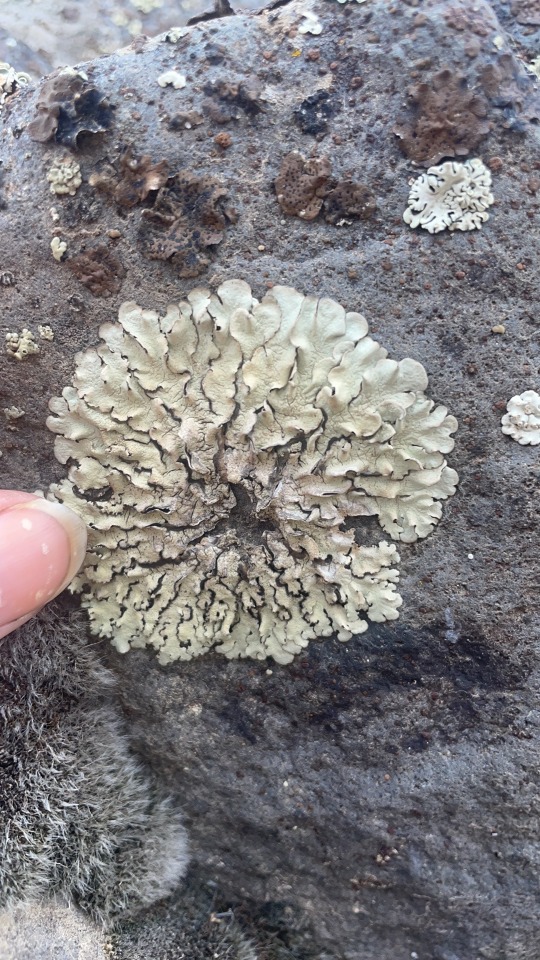
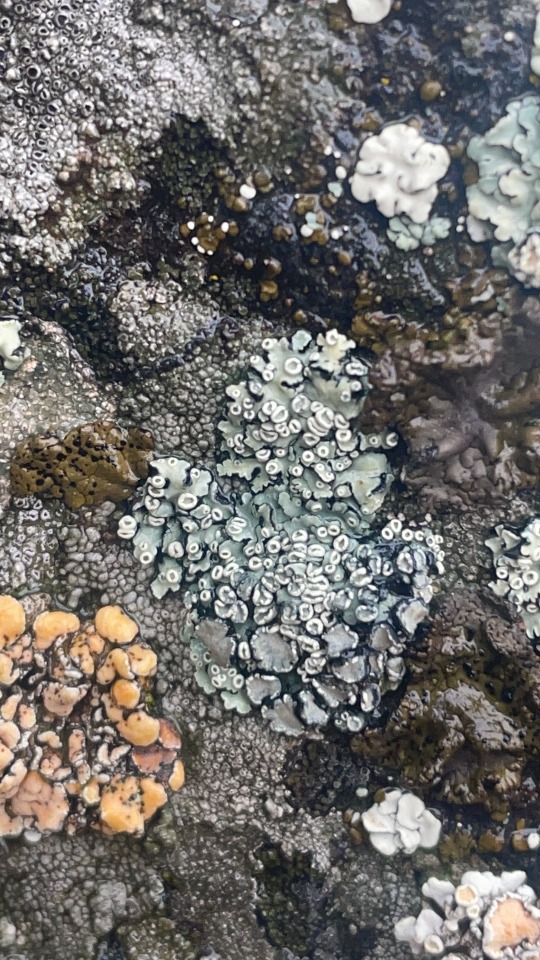




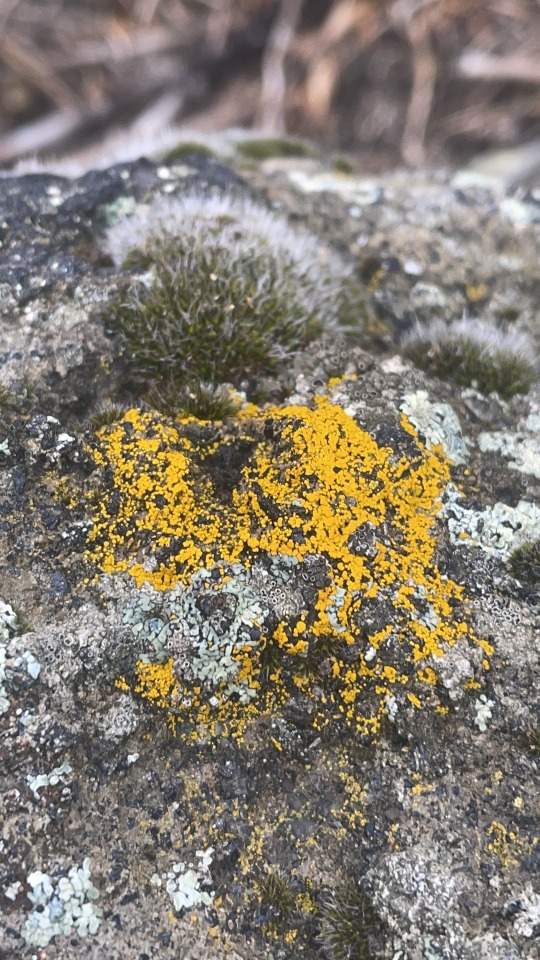
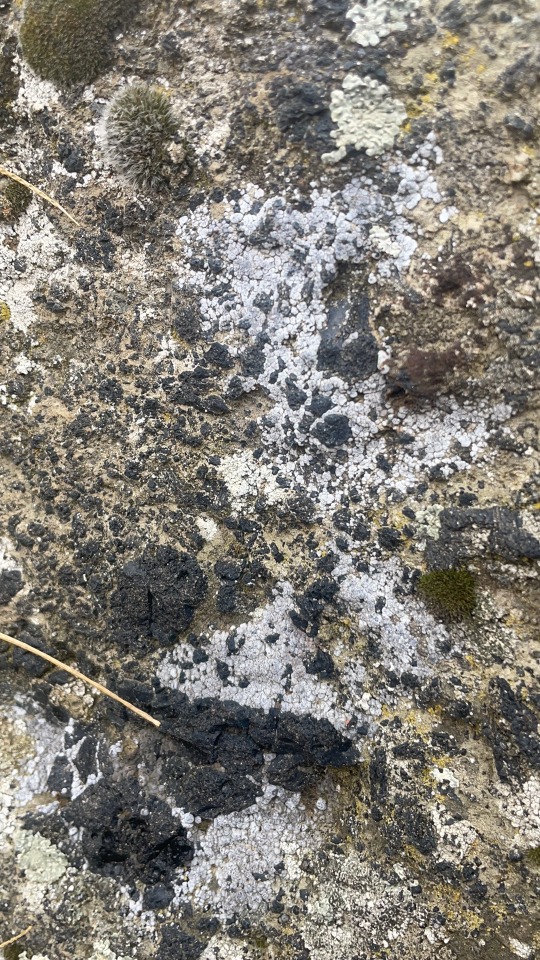

Some cool lichens I saw today! Seek was able to ID a few but it really struggles with crustose ones.
and a bonus, brown eyed wolf lichen!
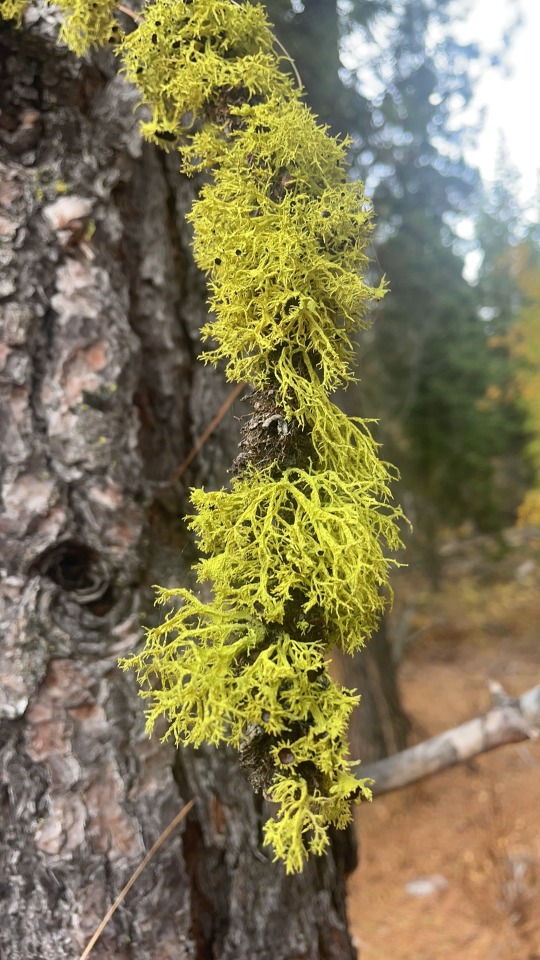
#might be letharia vulpina actually#I don’t know for sure but it has the eyes#lichen#lichens#eastern Washington#Douglas creek
201 notes
·
View notes
Text








Fuscidea kochiana
This lichen reminds me of cookie dough ice cream. Maybe it's just because it's hot out and I would commit terrible crimes for a scoop of cookie dough ice cream. Who can say? F. kochiana looks like cookie dough because it has a lumpy, tan thallus and brown-black apothecia which look like chocolate chips embedded in the surface. It can be found growing on hard, silicious rock at high elevations.
images: source | source
info: source
#lichen#lichens#lichenology#lichenologist#mycology#ecology#biology#fungi#fungus#nature#symbiosis#symbiotic organisms#algae#Fuscidea kochiana#Fuscidea#trypo#tw: trypophobia#trypophobia#I'm lichen it#lichen a day#daily lichen post#lichen subscribe#life science#environmental science#natural science#the natural world#beautiful nature#weird nature#crustose lichen
78 notes
·
View notes
Text



Bloodstain lichen 》 genus Haematomma
Southeast Texas, 7 July 2024
#amatuer mycology#mushrooms#mushroom hunting#mycology#fungi#mushrooms of texas#texas mushrooms#wild fungi#fungi of texas#fungarium#lichen#lichens#lichens of texas#lichenology#bloodstain lichen#crustose lichen#goblincore#special interest#species identification#lichen identification#crowcore#lichen species
7 notes
·
View notes
Text

Circinaria calcarea
Cascais/Portugal (21/11/2023)
[Nikon D850; AF 105mm Micro-Nikkor F2,8 with Circular Flash Nissin MF 18; 1/250s; F16; 400 ISO]
7 notes
·
View notes
Text
Moth of the Week
Peppered Moth
Biston betularia

The peppered moth is a part of the family geometridae. It was first described in 1758 by Charles Linnaeus. This moth gains its name from its speckled coloration, which has been studied as an example of natural selection and population evolution.
Description This species has a short body with narrow forewings. The body and wings are the same white base peppered with black dots and irregular black lines. This speckled pattern may vary with some moths having very few spots and others having so many that they look as if they are black with white spots as opposed to white with black. In rare cases, the black on the wings and body is replaced with gray or brown and in even rarer cases the spots are a combination of brown and black/gray. These spots help the moth camouflage against lichen on trees.
The evolution of this moth had been studied extensively during the last two hundred years, which created the term “industrial melanism.” During the Industrial Revolution, air pollution killed off lichen and covered trees in soot. This caused moths with a black spots on white base (typica) coloration to lose their camouflage and die off due to predators. This caused a spike in population for moths with a darker coloration (carbonaria) because they had the camouflage advantage. Once environmental conditions improved, the lighter colored moths once again became the dominant coloration.
The male’s antennae are bipectinate, meaning it has two rows of rami going down either side of a singular flagellum.
Wingspan Range: 45 - 62 mm (≈1.77 - 2.44 in)
Diet and Habitat The caterpillar of this moth eats many trees, shrubs, and small plants such as Blackthorn (Prunus spinosa), Hawthorn (Crataegus monogyna), Downy (Betula pubescens) and Silver Birch (Betula pendula), limes, sallows, poplars, oaks, Sweet Chestnut (Castanae sativa), Beech (Fagus sylvatica), Bramble (Rubus fruiticosus), Broom (Cytisus scoparius), Black Currant (Ribes nigrum) and Hop (Humulus lupulus).
They have a wide range, being found in China (Heilongjiang, Jilin, Inner Mongolia, Beijing, Hebei, Shanxi, Shandong, Henan, Shaanxi, Ningxia, Gansu, Qinghai, Xinjiang, Fujian, Sichuan, Yunnan, Tibet), Russia, Mongolia, Japan, North Korea, South Korea, Nepal, Kazakhstan, Kyrgyzstan, Turkmenistan, Georgia, Azerbaijan, Armenia, Europe and North America. They prefer habitats of woodland, scrub, hedgerows, parks and gardens.
Mating Depending on its location, this moth can have one or two generations per year. In Great Britain and Ireland, the peppered moth has one generation per year, whilst in south-eastern North America it has two generations per year. They emerge from the pupea in late May to August.
The females attract males with pheromones, which are carried by the wind. Males follow the concentration gradient to find the female. The male guards the female from other males until she lays the eggs. The female lays about 2,000 pale-green ovoid eggs about 1 mm in length into crevices in bark with her ovipositor.
Predators This species is a night-flying moth, making the vulnerable to bats. The males in particular fly every night to search for a female while females fly only the first night.
To protect themselves from birds during the day, this species rests on lichen covered trees to camouflage themselves.
The day time resting positions of this moth have been recorded and studied. This study shows that the peppered moth prefers resting spots that are covered such as below where the trunk and a branch meet, the underside of branches, and leafy twigs.
Additionally, the study found peppered moths with a lighter coloration (typica) blend in better against crustose lichens rather than foliose lichens because birds can see ultraviolet light. The peppered moth reflects UV light while crustose lichens don’t, making them easier to pick out.
Fun Fact The caterpillars of the peppered moth resemble things in both color and size. An experiment published in 2019 done on the caterpillars of the peppered moth showed that the larva (even when blindfolded) could sense the color of the tree they live on and change their body color to match and/or would move to a different twig that was closest in color to their own body.
(Source: Wikipedia, Butterfly Conservation, Max Planck Institute)
#Biston betularia#libraryofmoths#animals#bugs#facts#insects#moth#lepidoptera#mothoftheweek#Geometridae#peppered moth
87 notes
·
View notes
Text
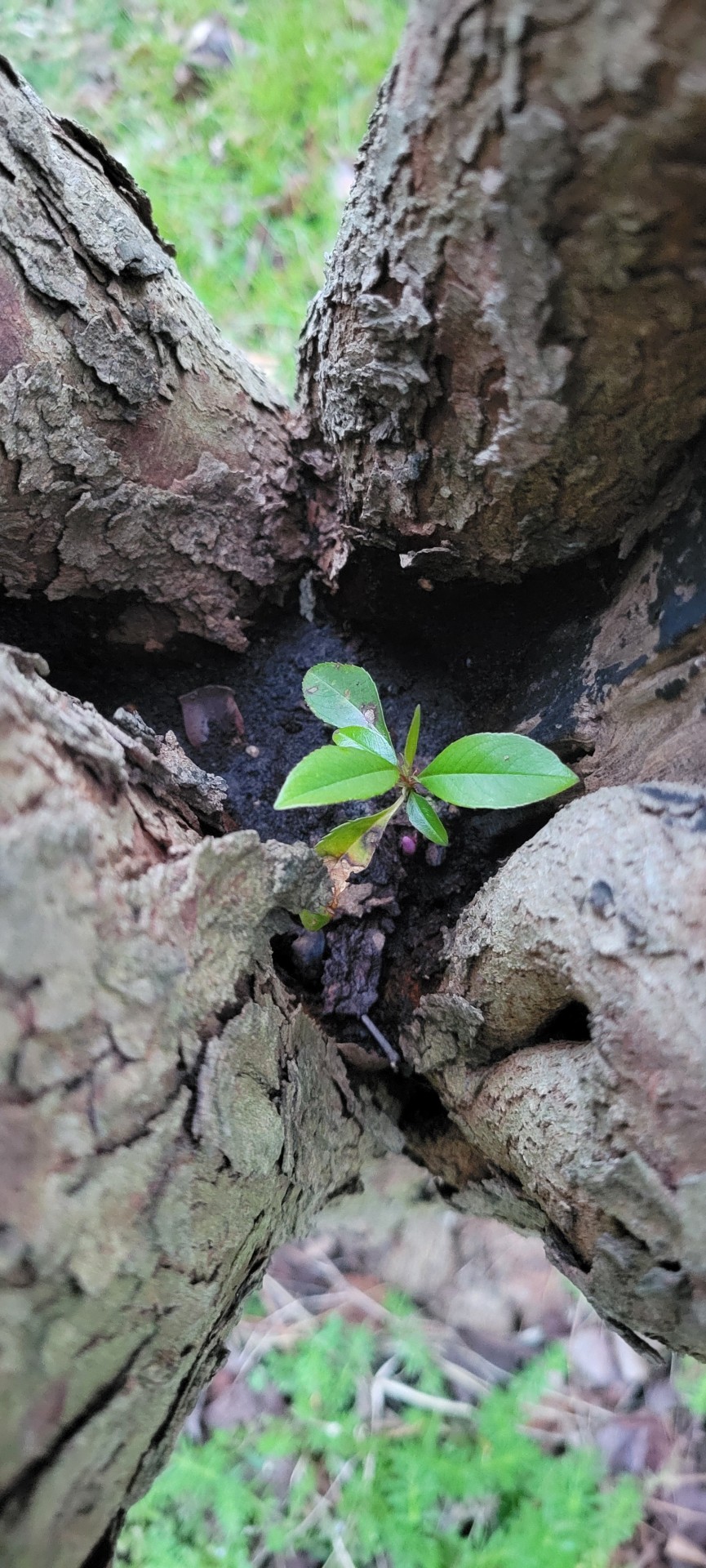
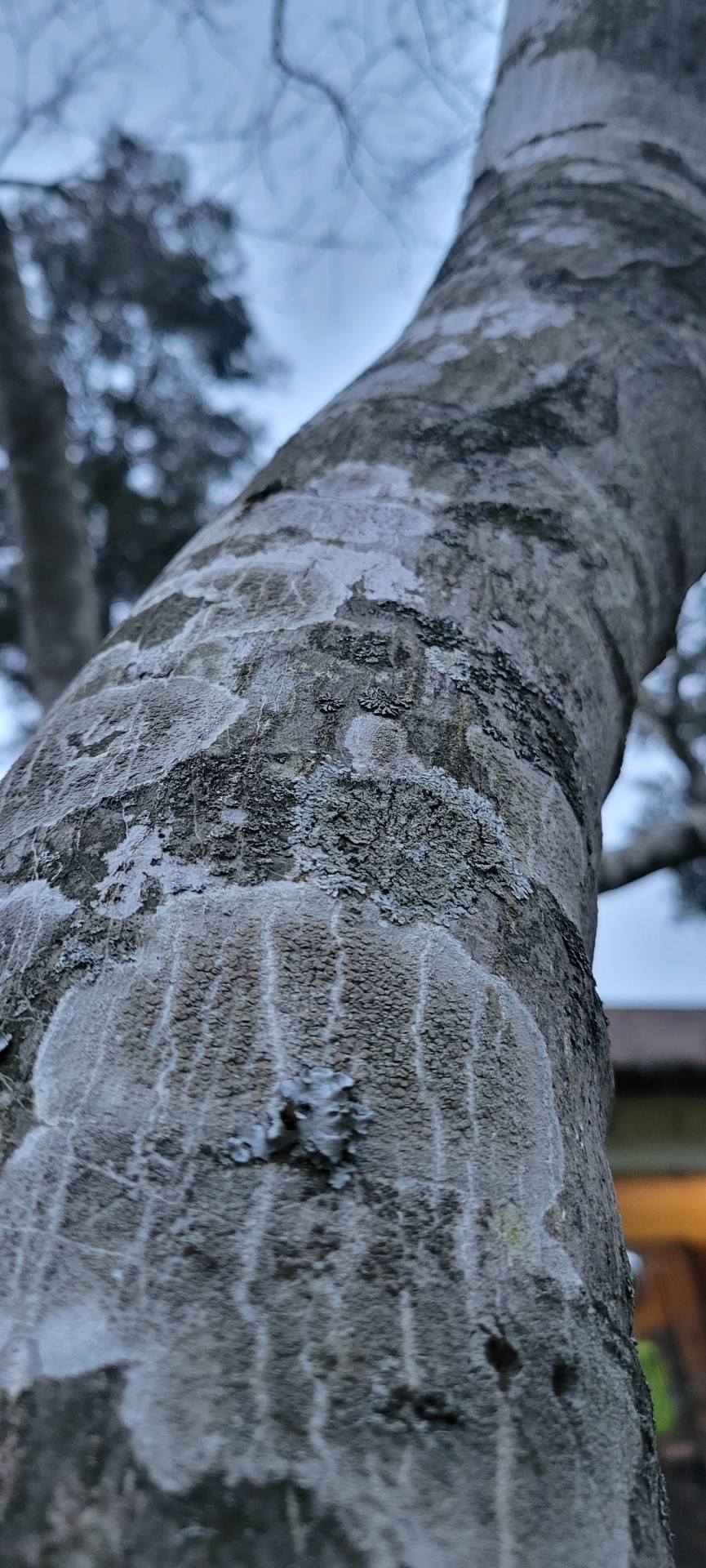

I suddenly found myself hyperfixated on nature last week. So, I'm starting a new blog to dump all of my identifications and learnings! I've taken a particular interest in fungi, trees, and birds, so I expect I'll be posting quite a bit about that. Here's to growing closer to the world around me!
pictures in this post:
1. A baby plant growing inside of an Eastern redbud in my front yard! (Cercis canadensis)
2. Some neat lichens (unsure of specifics, but there's a mix of crustose and foliose) on a Japanese maple (Acer palmatum)
3. A branch of leaves of a Hidcote St. John's Wort shrub (Hypericum hidcoteense)
#plants#plantblr#plant photography#nature#naturalist#trees#fungi#lichen#new blog#plant identification#escapism#hyperfixation#outdoors#explore
9 notes
·
View notes
Text
"crustose" literally sounds like an enzyme that breaks down solidified fluids could they have picked a different word to describe lichen shapes please
10 notes
·
View notes